Unlocking the Benefits of Aluminum Foil: Your Guide to Choosing the Right Supplier
In today's dynamic market, understanding the intricacies of selecting the right aluminum foil supplier is essential for businesses aiming to optimize their operations. The global aluminum foil market is projected to reach approximately $38 billion by 2025, growing at a CAGR of 4.8%. This growth is driven by increased demand across various sectors including food packaging, automotive, and construction. As companies strive for sustainability, choosing a supplier who not only meets quality standards but also adheres to eco-friendly practices becomes critical. Key factors to consider involve evaluating the supplier’s manufacturing capabilities, product specifications, and compliance with international regulations. By unlocking the benefits of aluminum foil through informed supplier selection, businesses can enhance their product offerings and improve overall efficiency.

Understanding the Global Aluminum Foil Market: Key Statistics and Trends
The global aluminum foil market is experiencing significant growth, driven by increased demand across multiple sectors, including pharmaceutical and food packaging. According to a report by Custom Market Insights, the Pharmaceutical Contract Packaging market alone is projected to reach USD 34.80 billion by 2034, with a compound annual growth rate (CAGR) of 7.34%. This surge indicates a robust expansion in the use of aluminum foil for packaging applications as it offers excellent barrier properties, contributing to the preservation of product integrity.
Furthermore, market projections for aluminum foil prices are also optimistic. The IMARC Group forecasts significant trends and price shifts through 2025, which align with the expected growth trajectory of the industry. The Aluminum Bag and Packaging Market is anticipated to grow at a CAGR of 6.4%, reflecting an increased reliance on aluminum foil in various packaging types, such as foil bags and pouches. This increasing versatility and demand underline the importance of selecting the right suppliers to meet the evolving requirements of businesses and consumers alike.

Evaluating Supplier Credentials: Certifications and Compliance in Aluminum Foil Production
When selecting an aluminum foil supplier, evaluating their credentials is crucial to ensure compliance with industry standards. Certifications such as ISO 9001 and ISO 14001 indicate that a manufacturer adheres to quality management and environmental management systems, respectively. According to a report by Grand View Research, the global aluminum foil market size was valued at USD 29 billion in 2022 and is expected to expand at a CAGR of 4.5% from 2023 to 2030. This growth highlights the importance of partnering with compliant suppliers, as industry leaders often possess necessary certifications that reflect their commitment to quality and safety.
Furthermore, compliance with FDA regulations is essential for suppliers involved in food-grade aluminum foil production. This ensures that the materials used are safe for food contact and meet health standards. A study from the Aluminum Association revealed that over 75% of aluminum foil produced is used in packaging, emphasizing the critical nature of proper supplier credentials in maintaining product integrity. Ensuring that potential suppliers are compliant with relevant certifications not only fosters trust but also contributes to brand reputation and operational efficiency in the long run.
Unlocking the Benefits of Aluminum Foil: Your Guide to Choosing the Right Supplier
| Supplier Location | Certifications | Compliance Standards | Production Capacity (tons/year) | Years in Business |
|---|---|---|---|---|
| North America | ISO 9001, FDA Approved | CFR Title 21, GMP | 30,000 | 15 |
| Europe | ISO 14001, BRC | EU Regulation 1935/2004 | 25,000 | 20 |
| Asia | ISO 45001, HACCP | FDA/ USDA Compliance | 40,000 | 10 |
| South America | ISO 9001 | Standards NBR 15392 | 15,000 | 8 |
Assessing Quality Standards: The Role of Thickness and Alloy Composition in Aluminum Foil
When selecting aluminum foil, the quality standards defined by thickness and alloy composition play a crucial role in determining its suitability for various applications. Thickness, often measured in microns, affects the foil's strength and durability. For instance, thicker foils are typically employed in industrial settings where resistance to tearing and puncturing is paramount, while thinner options are ideal for household use such as cooking and wrapping. The selected thickness should align with the intended application to ensure optimal performance.

Alloy composition is another critical factor influencing the properties of aluminum foil. Different alloys offer varying levels of flexibility, corrosion resistance, and thermal conductivity. For example, aluminum alloy 1100 is known for its excellent workability and resistance to corrosion, making it a popular choice for food packaging. In contrast, alloy 8079 provides enhanced barrier properties, thus ensuring better preservation of food products. By understanding these characteristics, businesses and consumers can make informed decisions when choosing a supplier, ensuring they receive aluminum foil that caters precisely to their needs.
Cost-Effectiveness Analysis: Comparing Prices Among Leading Aluminum Foil Suppliers
In the context of selecting the right supplier for aluminum foil, a cost-effectiveness analysis is critical. Amid the rising operating rates in the aluminum processing industry, which reached 62.1%, it is essential for businesses to compare prices among leading suppliers. This comparison not only helps in identifying competitive pricing but also in assessing the overall value offered by each supplier, including factors such as quality, delivery times, and customer service. With the consumption across various sectors rebounding during the peak season, understanding the cost dynamics becomes crucial for procurement strategies.
The market outlook for aluminum foil and related products is promising, with growing segments like aluminum disposable plates and antibacterial hydrophilic aluminum foil projected to see significant growth in the coming years. As suppliers navigate challenges such as a predicted decline in China's aluminum exports by 2025, it is vital for businesses to stay informed about market trends and pricing strategies. Making informed decisions based on thorough cost-effectiveness analyses will allow companies to optimize their supply chains and maintain a competitive edge in the aluminum foil market.
Cost-Effectiveness Analysis of Aluminum Foil Suppliers
This bar chart compares the price per 100m roll of aluminum foil from different suppliers, illustrating the cost-effectiveness among them.
Sustainability Practices: How the Aluminum Foil Industry is Adapting to Eco-Friendly Standards
In recent years, the aluminum foil industry has been making significant strides towards sustainability practices that align with eco-friendly standards. With growing consumer awareness regarding environmental issues, manufacturers are now prioritizing the use of recycled materials and adopting greener production processes. Many suppliers are investing in technologies that minimize energy consumption and reduce waste, making their operations more resource-efficient. This shift not only benefits the planet but also helps brands appeal to environmentally conscious consumers.
Additionally, some companies are exploring innovative ways to enhance the recyclability of their products. This includes developing aluminum foil that maintains its quality while being more easily recyclable in various municipal systems. The push for stricter regulatory compliance is encouraging manufacturers to reassess their supply chains and integrate sustainable sourcing practices. By collaborating with certified suppliers, businesses can ensure a more responsible production cycle, ultimately contributing to a circular economy that emphasizes environmental stewardship.
Related Posts
-
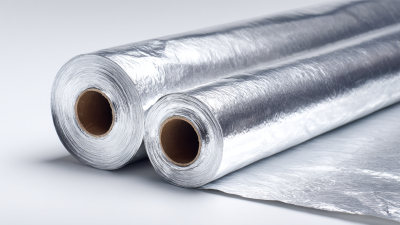
How to Effectively Use Aluminium Foil in Your Kitchen for Optimal Cooking Results
-

5 Tips for Maxing Out the Benefits of Alu Foil in Your Kitchen
-
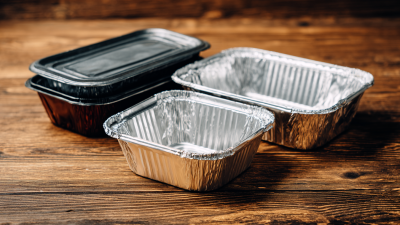
How to Choose the Right Foil Container for Your Food Packaging Needs
-
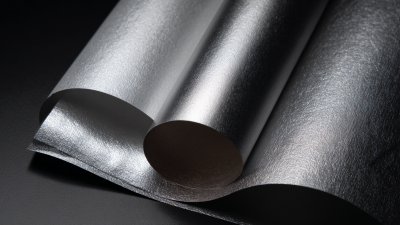
Exploring Silver Foil Paper Trends and Market Dynamics at the 138th Canton Fair 2025 in China
-
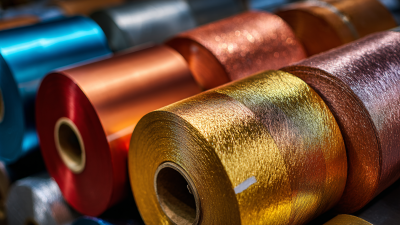
Unlocking Opportunities: Aluminum Wrap Market Insights at the 138th China Import and Export Fair 2025
-
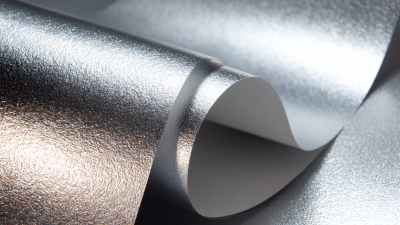
Why Silver Foil Paper Is the Secret Ingredient for Stunning Packaging
